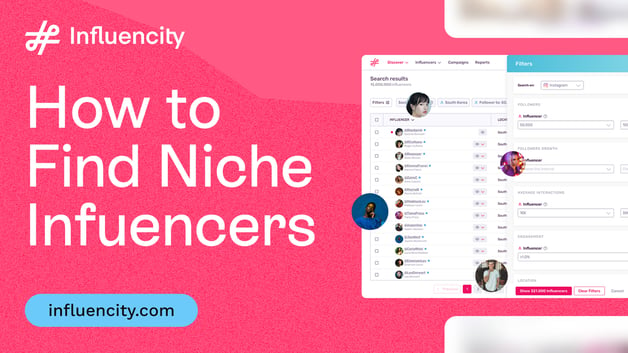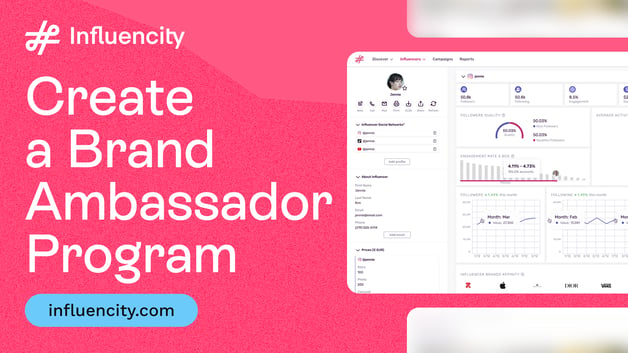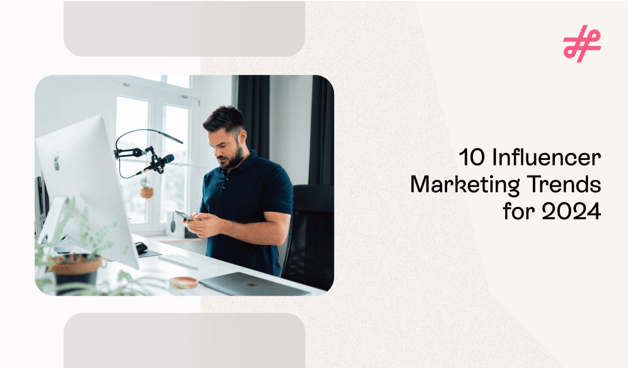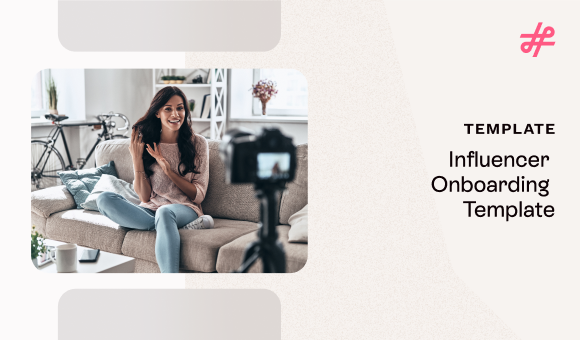- Don’t assume they’ll know your brand or care yet, so introduce yourself and provide some support links for them to get to know you!
You’re not just recruiting talent, you’re laying the groundwork for brand ambassadorship, where loyalty is built before the first post goes live.
Deliverables for Pre-Onboarding
If you want your ambassador program to feel like a professional brand partnership (not a random gig), you’ll need to put in a little extra up front.
1. Personalized Outreach Email
Don’t overthink it, just be human. Something like:
-1.png?width=600&height=450&name=White%20%26%20Green%20Modern%20Bar%20Chart%20Graph%20(34)-1.png)
2. Interest Form (Before Signup)
Gather must-know info without scaring them away:
- Preferred content types (Reels, blogs, lives, etc.)
- Platforms they’re most active on
- Product category preferences
Creative flexibility questions (e.g., “Do you prefer structured briefs or full freedom?”)
-2.png?width=700&height=143&name=White%20%26%20Green%20Modern%20Bar%20Chart%20Graph%20(35)-2.png)
Tips to Nail Pre-Onboarding
- Treat it like dating, not hiring. Start with shared values, then grow into deliverables.
- Use a discovery call for top-tier creators: 15 minutes to align on goals, audience, and content format.
- Send a welcome gift or code immediately to spark delight. Physical welcome kits perform especially well with lifestyle creators and family influencers.
- Don’t make them hunt for info. A simple, one-page onboarding PDF with links and dates goes a long way.
Phase 2: Creator Welcome & Toolkit and Set Them Up Like a Pro
After onboarding hundreds of creators for brands big and small, I’ve learnt that first impressions are the foundation.

The moment a creator officially joins your campaign or ambassador program, your welcome experience becomes your handshake, your contract, and your tone-setter all at once.This is your chance to say:
“We’re not just a brand. We’re a team and here’s how we win together.”
A vague “Hey, here’s the brief” won’t cut it anymore. Today’s top creators work with multiple brands across platforms, they need clarity, guidance, and yes, a little inspiration.
Done right, a good welcome + toolkit:
- Prevents misalignment in tone or content
- Builds creator confidence
- Cuts back-and-forth with your team
- Drives faster turnaround on quality posts
What to Include in Your Creator Toolkit (Yes, You Need One)
Think of your toolkit as a mini content portal. Whether it’s a Notion doc, Google Drive folder, or a dedicated onboarding page, it should be clear, clean, and super easy to navigate.
Here’s your checklist of what to include:
1. Your Brand Story & Mission
Let them understand your “why.” Don’t just tell them you sell skincare, show them you stand for self-care, sustainability, or Gen Z-friendly science.
Pro Tip: Use 2–3 sentences max + a link to a deeper brand story or about page.
2. Audience Persona Overview
Tell creators who they’re speaking to. Include details like:
- Demographics (age, location, identity)
- Pain points (what’s frustrating them?)
- Aspirations (what do they want to feel?)
If you’re onboarding creators for a campaign like Target’s baby line, your audience might be:
“First-time parents, aged 24–34, interested in affordable, safe, stylish baby gear they can trust.”
3. Campaign Goals
Spell it out clearly. Are you going for:
- Awareness (reach, impressions)?
- Conversions (link clicks, code redemptions)?
- Engagement (comments, DMs, saves)?
Don’t make creators guess. If it’s a UGC campaign, say so. If you want tutorial-style reels with a call-to-action, explain it clearly.
4. Creative Do’s and Don’ts
Help them get it right the first time.
Do:
- Use natural lighting
- Speak to the camera
- Mention the product benefit, not just the name
Don’t:
- Use filters that distort colors
- Mention competitors
- Alter the logo
Add a post of one of nike’s ambassadors
Nike’s creator toolkit includes slides on tone-of-voice, emoji usage (no with serious product lines), and a “how NOT to use the logo” visual guide.
5. Content Inspiration Gallery
This is a game-changer. Show 3–5 strong examples (screenshots or links) of content that fits your vision.
- Reels from past campaigns
- UGC samples
- TikToks that nailed the vibe
Pro Tip: Use a folder with labeled content buckets like:
Approved Style | Needs Fixing | Avoid This
6. Compliance & FTC Guidelines
Be proactive about disclosure. Include:
- How to use hashtags like #ad or #sponsored
- Where to position the disclosure (ideally above the fold in captions)
- Platform-specific rules (especially TikTok, YouTube, and Reels)
Tip: Link to the latest FTC Endorsement Guidelines or create a 1-pager with examples.
Packaging It All: Format Options
Choose what works for your team and your creators:
- Influencity Brief Template (perfect for centralized, all-in-one creator campaigns)
- Notion Doc (good for small agencies)
- Google Drive Folder (easy for everyone to access)
Keep your language encouraging, energetic, and on-brand. You’re building a collaborative vibe, not assigning homework!:
.png?width=700&height=225&name=White%20%26%20Green%20Modern%20Bar%20Chart%20Graph%20(39).png)
Tips to Streamline Your Welcome Phase
- Create one reusable base template you can customize per campaign.
- Host a welcome Q&A call or recorded Loom video to walk through everything.
- Include a shared calendar with key campaign dates, content deadlines, and bonus drop-ins (i.e., new products, story reposts, etc.).

Real-World Inspiration
- Glossier sends a “Tone & Texture” brief, think mood boards, sample captions, and a color palette.
- Sephora Squad gets a full welcome kit with post formats, caption starters, and repost etiquette.
- Jamie Oliver’s team includes visual guides to lighting, kitchen setup, and camera angles, especially for up-and-coming food creators.
So, don´t forget to include the following items to build your creator welcome kit:
- Campaign overview
- Contact sheet (approvals, invoicing, creative feedback)
- Upload schedule
- FTC disclosure reminders
- FAQ ("Can I shoot vertically? Is swearing OK?")
This kind of touchpoint tells creators: “We’ve got our act together, and we value your time.” Also, make sure you avoid the following rookie errors:
- Sending generic briefs that don’t acknowledge the creator’s niche or audience
- Assuming creators have worked with similar brands before
- Ghosting after campaign delivery — no feedback = no loyalty
- Overloading creators with legal jargon — speak human, not corporate
Phase 3: Content Collaboration, Not Control
Once creators are onboarded and aligned, it’s time to move into the heart of the relationship: content creation. But here's the key, you’re partnering with storytellers.
Letting go of total control is hard for brands, especially when budgets are involved. The most successful influencer campaigns in 2025 are co-created, not top-down managed.
Key Practices for Collaborative Content
Approve Angles, Not Lines
- Sign off on content themes (e.g., “hydration for dry skin” or “back-to-school haul”) instead of word-for-word scripts.
Trust creators to phrase it in their own voice.
Audiences can tell when something’s scripted. Authenticity is still the #1
Schedule Check-Ins, Not Micromanagement
- Book 1–2 touchpoints: one after the concept is pitched, another after the draft.
- Avoid daily check-ins or post-by-post approvals unless it's a regulated industry.
Pro Tip: Use tools like Influencity, Google Docs or Notion to track drafts and feedback asynchronously.
Co-Creation = Higher Retention
By inviting influencers into early ideation stages, not just at the post-production point, Sephora unlocked:
-1.png?width=700&height=345&name=White%20%26%20Green%20Modern%20Bar%20Chart%20Graph%20(36)-1.png)
This is also translated into more authentic narratives that reflect diverse beauty routines.
Content Collaboration Tools That Work
- Welcome Kit with Collaboration Guidelines: List creative freedoms vs. brand essentials
- Creator Portal: Store briefs, calendars, examples
- Live Kickoff Calls or Loom Walkthroughs: Set expectations visually and personally
Dos and Don’ts of Content Collaboration
.png?width=600&height=380&name=White%20%26%20Green%20Modern%20Bar%20Chart%20Graph%20(37).png)
Phase 4: Feedback Loop & Performance Recap
Close the loop. Open the relationship. Once the content is live and the likes, clicks, and saves have rolled in, the instinct for many agencies or brands is to archive the campaign and move on. But if you want repeatable success, long-term creator retention, and stronger performance in the next round, Phase 4 is where it all starts.
The post-campaign stage isn’t just a reporting formality. It’s your golden opportunity to turn a creator into a partner.

Think of your creators not as hired content machines, but as collaborative allies. If you treat them as part of your internal team, giving them access to performance insights and asking them for feedback, they’ll be 10x more likely to go above and beyond next time.
Creators who receive performance insights post-campaign are 28% more likely to work again with the brand within the next 90 days.
Share What Mattered:What should you send in your performance recap?
Engagement Stats
- Likes, saves, shares, comments
- Retention rate (for Reels/Shorts)
- Story tap-backs or link clicks
Tip: Highlight what outperformed platform averages to show creators their impact. You can use our ebook + template, “The Influencer Marketing Reporting Playbook for Agencies” to carry this step out.
For example, “Your GRWM TikTok drove 2,327 clicks and 149 conversions in 24 hours—more than any other creator in the campaign.”
Creative Insights
- What type of content had higher watch time?
- What thumbnail or caption format performed best?
Something like, “The lifestyle reel with ambient sound outperformed the talking-head video by 37% in engagement.”
Creators value performance insights as much as brands do.It helps them grow and improve too.
Ask Creators for Their POV
Feedback isn’t just one-way. Creators hold the key to creative process optimization, but only if you ask.
Smart Questions to Include:
- “What would’ve made this collaboration easier or smoother?”
- “Were any tools or platforms frustrating?”
- “Any content types you wish we had tried?”
- “Would you be interested in a long-term ambassador role?”
Here is a sample creator recap email you can use to check on your creators’ experiences:
.png?width=700&height=525&name=White%20%26%20Green%20Modern%20Bar%20Chart%20Graph%20(38).png)
Actionable Steps for Agencies & Brands
- Build a Recap Template: Use it consistently across campaigns. Include charts, visuals, and bullet-point highlights.
- Create a Two-Way Debrief Process: Schedule optional 10-min calls or use asynchronous surveys.
- Reward Top-Performers: Surprise bonuses, shoutouts, or early access to next briefs go a long way.
- Flag Creators for Retargeting: If a creator nailed your brand voice, don’t wait—secure them for the next launch or seasonal push.
Phase 5: Advocate Building & Re-Engagement
By now, you’ve briefed, onboarded, launched, and debriefed. So what’s next? The real win comes when creators don’t just post but stay.
Welcome to the advocate phase, the point at which creators transition from transactional partners to trusted brand ambassadors, campaign co-creators, and loyal evangelists. If you get this right, your best influencers will keep showing up, driving higher engagement, stronger conversions, and lower acquisition costs campaign after campaign.
Trust compounds. So does content quality. So does audience credibility. One-time campaigns can go viral, but ambassador programs build legacy. When creators genuinely believe in your product, their advocacy comes through in every frame, caption, and interaction.
A creator who posts about you twice a year with genuine love is more impactful than 10 one-off influencers pushing pre-written copy.
Action Steps to Build Long-Term Advocacy
Here’s how to shift your top-performing creators into your brand’s inner circle:
1. Leverage Ambassadors for Turnkey Content Creation
Why burn budget on studio shoots every quarter when your creators can deliver high-quality, brand-aligned visuals year-round?
- Use ambassadors to generate ongoing evergreen content
- Pair with UGC for versatile, authentic marketing assets
- Reuse in email, paid media, PDPs, in-store displays, etc.
Think how Target partners with parenting influencers year-round (e.g., @taylormathis, @my3littlebirds) to generate seasonal but timeless content that fills their feed and sales funnel, without overreliance on paid ad creatives.
2. Build an Ambassador Tier System
Not all creators need the same level of access, but your best ones should feel like part of your team.
Create tiered groups:
- Tier 1: Creator Council. These creators are involved in campaign ideation & product feedback.
- Tier 2: Core Ambassadors: These have early access to briefs, exclusive products, recurring deals
- Tier 3: Community Builders: These are occasional drops, engagement-only collabs
Tool Tip: Use a simple Notion doc, Airtable, or Influencity’s notes to keep track of which creators are in which tier.
3. Bring Them Into the Brainstorm
No one understands creator audiences better than the creators themselves. Involve them in content ideation and watch your campaign storytelling elevate overnight.
Invite them to:
- Feedback sessions on brand tone
- Pre-launch creative workshops
- Caption or concept A/B testing
For instance, Sephora Squad members provide insights before campaigns go live, shaping inclusive messaging that’s truer to their audience and brand DNA.
4. Provide Ambassadors with Affiliate Links or Promo Codes
Ambassadors become micro-sales engines when you tie their storytelling to trackable ROI. Equip each with:
- Unique affiliate links (via Influencity, Shopify Collabs, LTK, etc.)
- Promo codes for their audience
- Tiered bonus incentives for volume-based performance
For instance, SKIMS uses custom links and UTM tracking for creators like @loriharvey and @oliviarodrigo to drive both reach and conversion, rewarding their top performers with exclusive drops and campaign priority.
5. Offer Early Access to Products or Campaigns
If you want to build loyalty, show your trust first. Letting creators be first to try, tease, or test your upcoming launches builds excitement and social proof.
Glossier sent skincare prototypes to a group of 30 micro-influencers weeks before public launch. Those same creators drove 3x more engagement than ads.
Another great example is how PlayStation let gaming influencers like Jacksepticeye preview titles in exchange for honest reactions, sparking viral excitement on YouTube.
6. Invite Ambassadors to Events and Activations
Want to increase emotional connection and loyalty? In-person magic matters.
Activate ambassadors with:
- Pop-up & launch events – boost social chatter
- Guest speaking gigs – leverage expertise & elevate credibility
- VIP experiences – think Coachella lounges, Eras Tour tickets, or Paris Fashion Week access
Fenty Beauty invited top creators to Rihanna’s launch events, creating viral moments that rippled across TikTok, IG, and YouTube and turned invited influencers into lifelong fans.
6. Surprise and Delight With Rewards
Want to build loyalty? Show appreciation, especially when the campaign’s over.
Ways to surprise:
- Custom thank-you boxes
- Seasonal bonuses for top performers
- Shoutouts on your brand’s channels
- Priority invites to future collabs
Did you know that SKIMS sends exclusive PR kits to long-term creators? They even include handwritten notes from Kim Kardashian herself. The result? UGC gold and deeper personal connection.
7. Co-Create Your Brand with Ambassadors and Ask for Their Input
True ambassadors help build your brand. Treat creators like collaborators, not just content suppliers.Ask things like:
- “What kind of campaign would you love to co-create?”
- “Any dream product you'd love to feature?”
- “What tools would make working with us smoother?”
You can also fuel the co-creation phase by involving them by:
- Asking for product feedback during beta phases
- Co-developing a product line (like Jaclyn Hill x Morphe)
- Co-hosting brand webinars or community events
- Letting them vote on packaging or shade names
Patagonia integrates environmental advocates into its design process. These creators help guide sustainable material use and campaign direction, deepening brand integrity and advocacy.
Ongoing Re-Engagement Action Plan
To ensure your creators stay warm and perform, here’s your retention rhythm:
Monthly:
- Send campaign performance recaps
- Offer early previews of upcoming briefs
- Share best-performing posts for inspiration
Quarterly:
- Run an “Ambassador Roundtable” feedback session
- Offer co-branded content opportunities
- Review affiliate stats and reward top drivers
Annually:
- Host a virtual summit or IRL gathering
- Launch limited-edition ambassador merch or kits
- Roll out new tier benefits based on historical contribution
Final Recommendations for Agencies & Brands
- Create a Creator CRM: Use tags like “ambassador potential,” “reengage Q3,” or “retarget with skincare line.”
- Build Custom Toolkits: Give long-term creators advanced resources (i.e. evergreen brand statements, raw assets, re-edit rights).
- Automate but Don’t Dehumanize: Use workflows (like Influencity) for re-invites, but always personalize the approach.
- Spot Early Signals: If a creator overdelivers, follow up right away with a “Let’s talk long-term” message.
Tags:
Ambassador Marketing



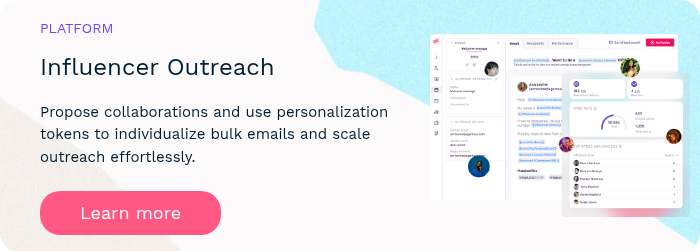
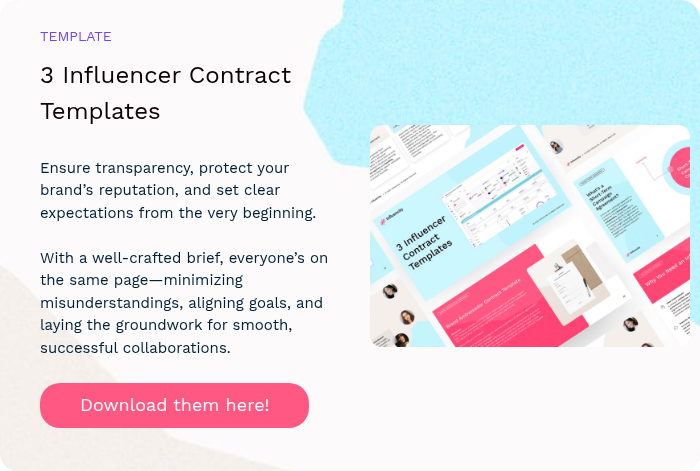

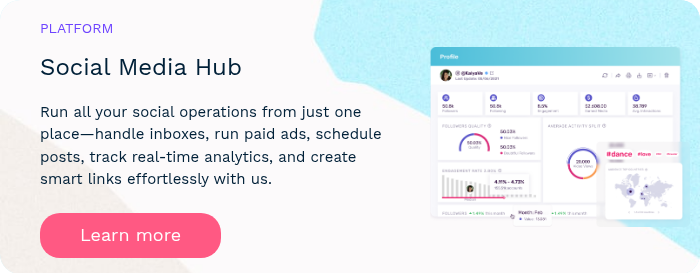


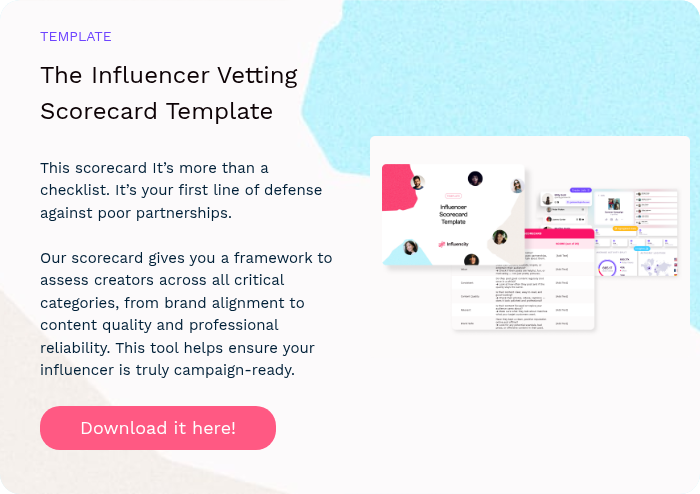

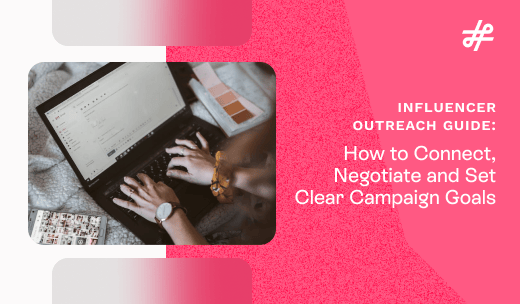




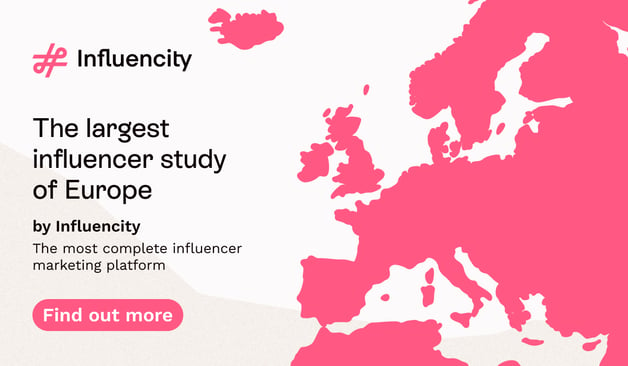

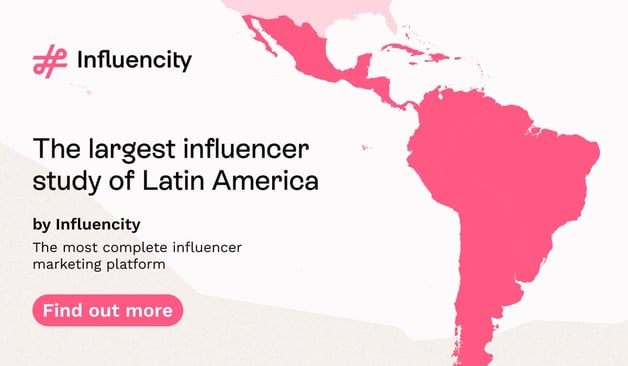


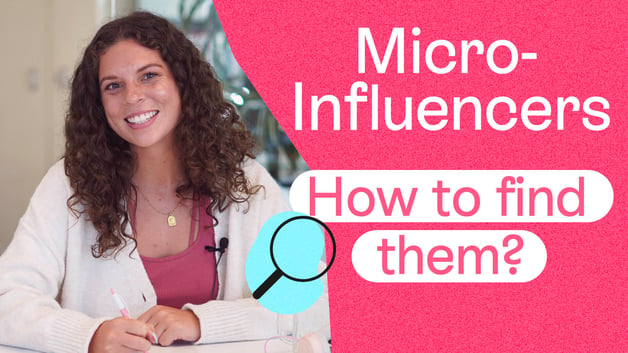


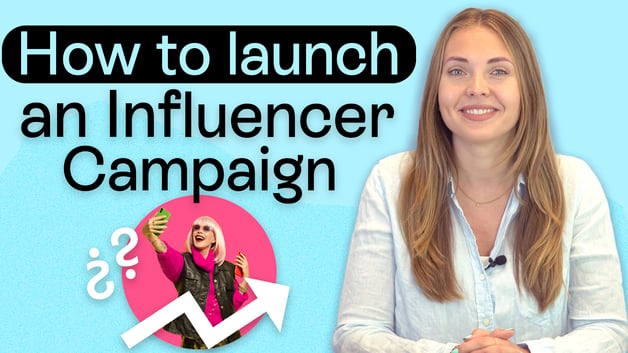

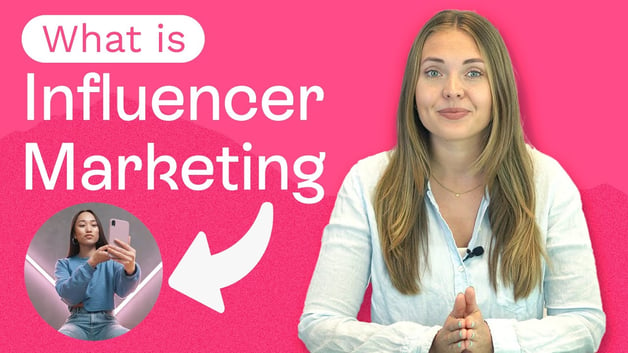

%20and%20How%20Can%20They%20Benefit%20Your%20Brand%20article.jpg?length=628&name=What%20Are%20Key%20Opinion%20Leaders%20(KOL)%20and%20How%20Can%20They%20Benefit%20Your%20Brand%20article.jpg)
